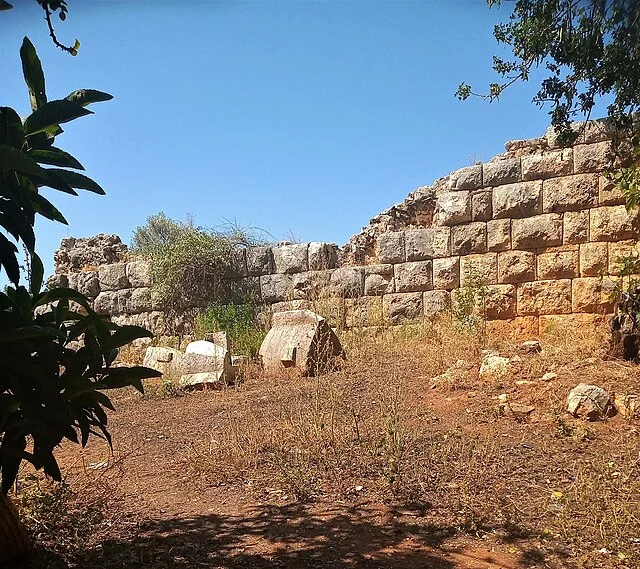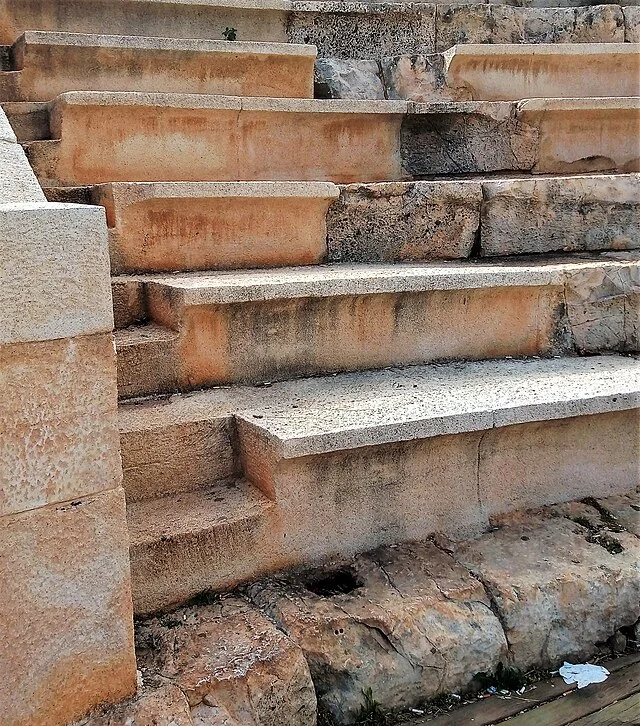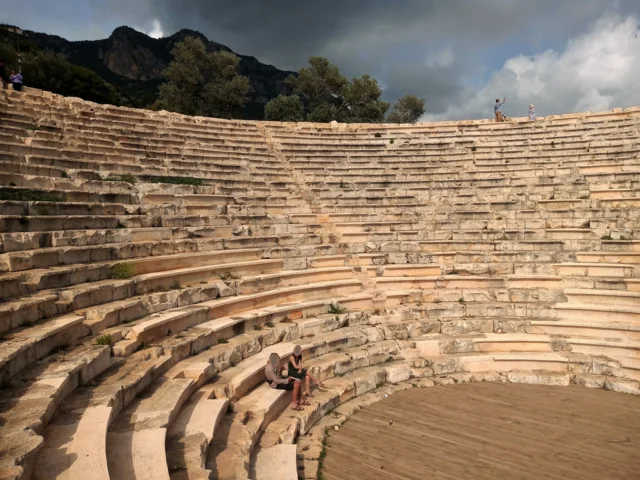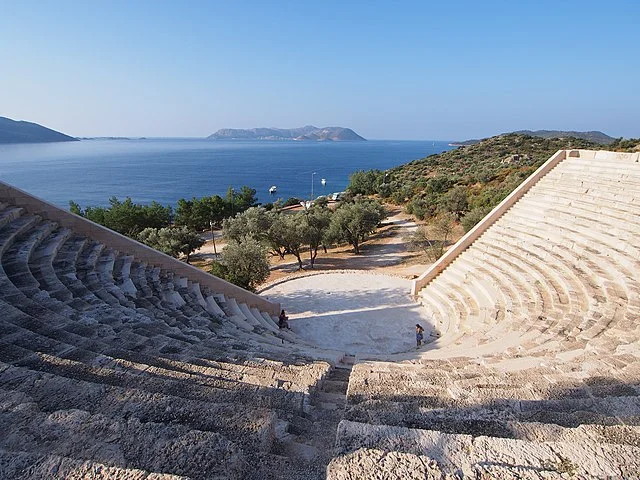Antiphellus was an ancient city located on the southwestern coast of Lycia, modern-day Turkey. It was a significant settlement in the Hellenistic and Roman periods, known for its strategic location and rich history. The city thrived due to its proximity to the sea, which facilitated trade and communication. Antiphellus’ archaeological remains offer important insights into the culture and daily life of ancient Lycia.
Get your dose of History via Email
Geography and Location

Antiphellus was situated near the modern town of Kas, which is located along the Turkish Mediterranean coast. The city stood on a peninsula, offering natural protection from the sea. Its location allowed Antiphellus to control important maritime routes, making it a valuable point for trade. The city’s proximity to other Lycian cities also contributed to its growth.
Historical Background

Antiphellus first appeared in historical records around the 5th century BC. It was part of the Lycian League, a federation of city-states that enjoyed a certain degree of autonomy. The city maintained its independence for much of its history, despite the influence of larger powers such as Persia and later, Rome. During the Hellenistic period, Antiphellus, like many other cities in the region, became involved in the power struggles between local rulers and the expanding Roman Empire.
In the 2nd century BC, Antiphellus came under Roman control, and the city flourished under Roman rule. The transition from Greek to Roman influence is evident in the city’s architecture, inscriptions, and urban planning.
Urban Layout and Architecture

The city’s layout reflects its role as a fortified settlement. Antiphellus had a series of defensive walls built on the peninsula’s natural cliffs, offering both protection and impressive views of the surrounding waters. The city contained several public buildings, including a theater, a bathhouse, and a well-planned necropolis.
The most remarkable feature of Antiphellus is its extensive rock-cut tombs. These tombs are similar to those found in other Lycian cities, characterized by their elaborate facades and intricate carvings. Many of the tombs date back to the 4th and 3rd centuries BC, providing valuable insights into the burial customs of the Lycian people.
Key Monuments and Structures
- Rock-Cut Tombs: The city is renowned for its rock-cut tombs, which are located along the cliffs surrounding the ancient settlement. These tombs are carved directly into the rock and are often adorned with reliefs depicting scenes from daily life or death rituals. Some of the tombs are monumental in scale, showcasing the wealth and status of the individuals buried there.
- Theater: Antiphellus also boasted a theater, a common feature in Hellenistic and Roman cities. The theater was likely used for entertainment, as well as for public gatherings and civic events. Its seating arrangements, which could accommodate hundreds of spectators, remain visible today.
- Bathhouse: The Roman bathhouse in Antiphellus is another significant structure, reflecting the influence of Roman culture on the city. Public baths were an important aspect of Roman life, serving both as a place for hygiene and social interaction.
- Harbor: The city had a natural harbor, crucial for its trade and naval activities. The harbor was used for both commercial and military purposes, allowing Antiphellus to maintain contact with other Mediterranean cities.
Cultural and Religious Aspects
The Lycian League, to which Antiphellus belonged, was a unique political entity. It was known for its system of shared governance, where cities cooperated in matters of foreign policy and military defense. The League’s emphasis on autonomy and local traditions influenced the culture of Antiphellus.
Religiously, Antiphellus was likely home to a variety of cults. Lycian cities often worshipped a mix of local gods and those adopted from the Greek and Roman pantheons. Evidence of religious practices is found in the inscriptions and reliefs on the tombs and public buildings.
Decline and Legacy
The decline of Antiphellus can be traced to several factors, including changes in trade routes and shifts in political power. By the early medieval period, the city had largely been abandoned. Today, Antiphellus stands as an important archaeological site, providing a glimpse into the urban and cultural development of ancient Lycia.
The remains of Antiphellus are among the best-preserved in the region. They offer valuable insights into the art, architecture, and daily life of ancient Lycian society. The city’s rock-cut tombs and other monuments continue to attract researchers and tourists alike, contributing to the ongoing study of Lycia’s rich historical heritage.
Conclusion
Antiphellus was a vibrant city that played a significant role in the history of ancient Lycia. Its strategic location, impressive architecture, and rich cultural heritage make it a key site for understanding the ancient Mediterranean world. Today, it remains a testament to the resilience and creativity of the Lycians, offering valuable lessons for modern scholars and visitors alike.
Source:

